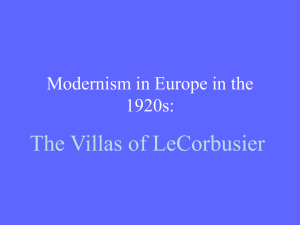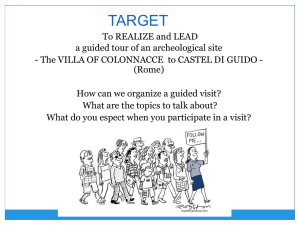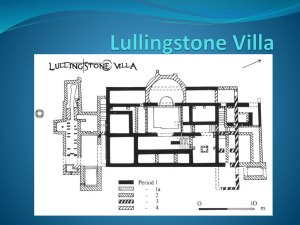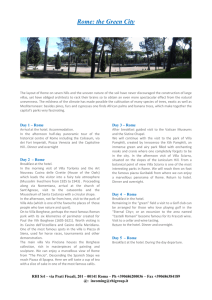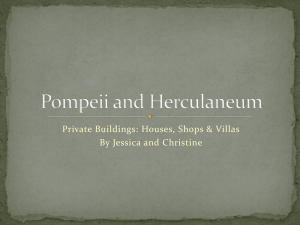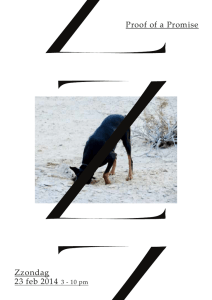What is a villa - Liceo Dante Alighieri
advertisement
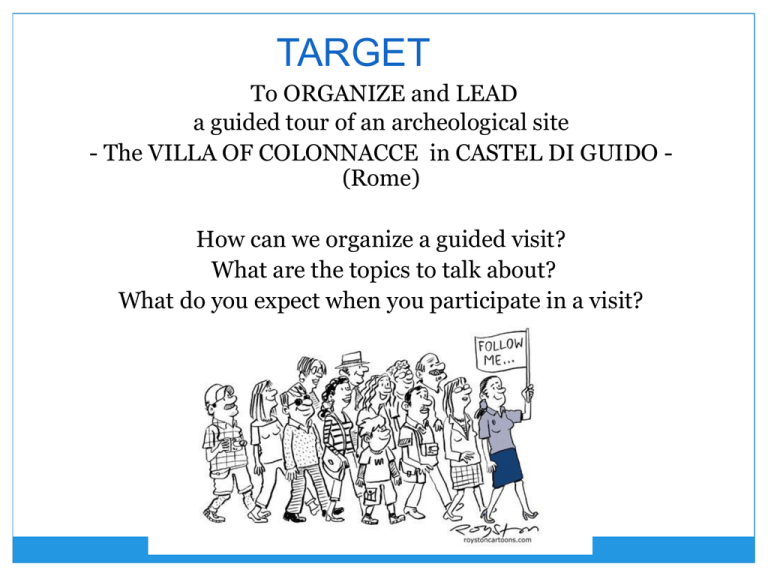
TARGET To ORGANIZE and LEAD a guided tour of an archeological site - The VILLA OF COLONNACCE in CASTEL DI GUIDO (Rome) How can we organize a guided visit? What are the topics to talk about? What do you expect when you participate in a visit? Aim of our guided tour A Roman villa ● What is a villa: the latin term refers to the building essentially destined to housing and to agricultural and pastoral activities, but also to productive activities and the administration of rural property as opposed to the houses within the city Aim of our guided tour Geographic area: Characteristic roman building type spread throughout the conquered territory Chronology Encoding of the model and first examples IV century b.C. Villa catoniana I century A.D. II century b.C. Villa varroniana Decay IV century A.D. VI century A.D. 0 VI century b.C. III century b.C. I century b.C. III century A.D. V century A.D. The exploitation of the territory before the villas Starting from the VI century b.C., with the establishment of cities, the countryside tends to lose population and the city becomes the center of political and social activities,whereas the country is still the center of economic activities, related to the exploitation of agricultural and pastoral resources The exploitation of the territory before the villas The use of territorial resources was managed in two different ways: 1. The area in direct contact with the urban settlement, flat, is cultivated directly by citizens 2. The area farther away from the town, hilly, is used for breeding, extensive cultivation and timber harvesting The exploitation of the territory before the villas The exploitation of the territory before the villas Starting from the IV century b. C., the development of land and cities changed in the territories under the domain of Rome: 1. New residential foundations such as the oppida and the vici: small settlements in the countryside 2. Allocation of plots of land to colonists or to war veterans who could use the resources according to their needs Examples of land allocation The birth of the “villa system” The political expansion of the First Punic War period leads to an increase of land use and slave labor. Moreover many of the first colonists are forced to abandon the land, go to war and sell their property to wealthy owners who can thereby expand their possessions and lay the foundations of the villa system. The birth of the “villa system” Villa catoniana and Villa Varroniana There are two types of Villa, also according to Pliny’s the Elder and Vitruvius’ writings: - the Villa catoniana, which is named after Cato’s De agri cultura - the Villa varroniana, derived from Varro’s De re rustica M. Porcio Catone The statue of Marco Terenzio Varrone in Rieti Villa catoniana This model of villa appears between the III and II century b. C. and is characterized as a small countryhouse managed by a farmer and easily reached from the city. It spreads new agricultural crops (vine and olive), in addition to traditional cereals, and we begin to see an evolution in the architecture of the villa in order to fulfil its new function: - To offer a valuable and fashionable space that may reflect the cultural and social status of the dominus. Villa catoniana Rural life and farming Slaves during their domestic activities Villa varroniana This model belongs to the I century b. C. and is described by Varro in De re rustica in 37 b.C.. The villa is the productive, administrative and residential center of a real rural property, divided into: - pars urbana, a residential area which can be more or less monumental - pars rustica where products are processed and preserved, which is located near the pars urbana (there can also be a pars fructuaria). Some examples of the activities: the press Villa varroniana The villa is characterized by an intensive use of the land and marketing of the various products derived from the diversification of crops and the use of slave force. In fact, with the expansion of Rome it becomes much easier to obtain slave workforce both as a consequence of war and through the great Aegean and oriental slave markets. From at least the II century b. C. onwards the villa is already used as a place for relax (otium) and escape from the ordinary activities and business (negotium) of public and social life practiced by the dominus in the city. Villa varroniana Thank you everybody! I hope you enjoyed the lesson We’ll see you next Monday.

